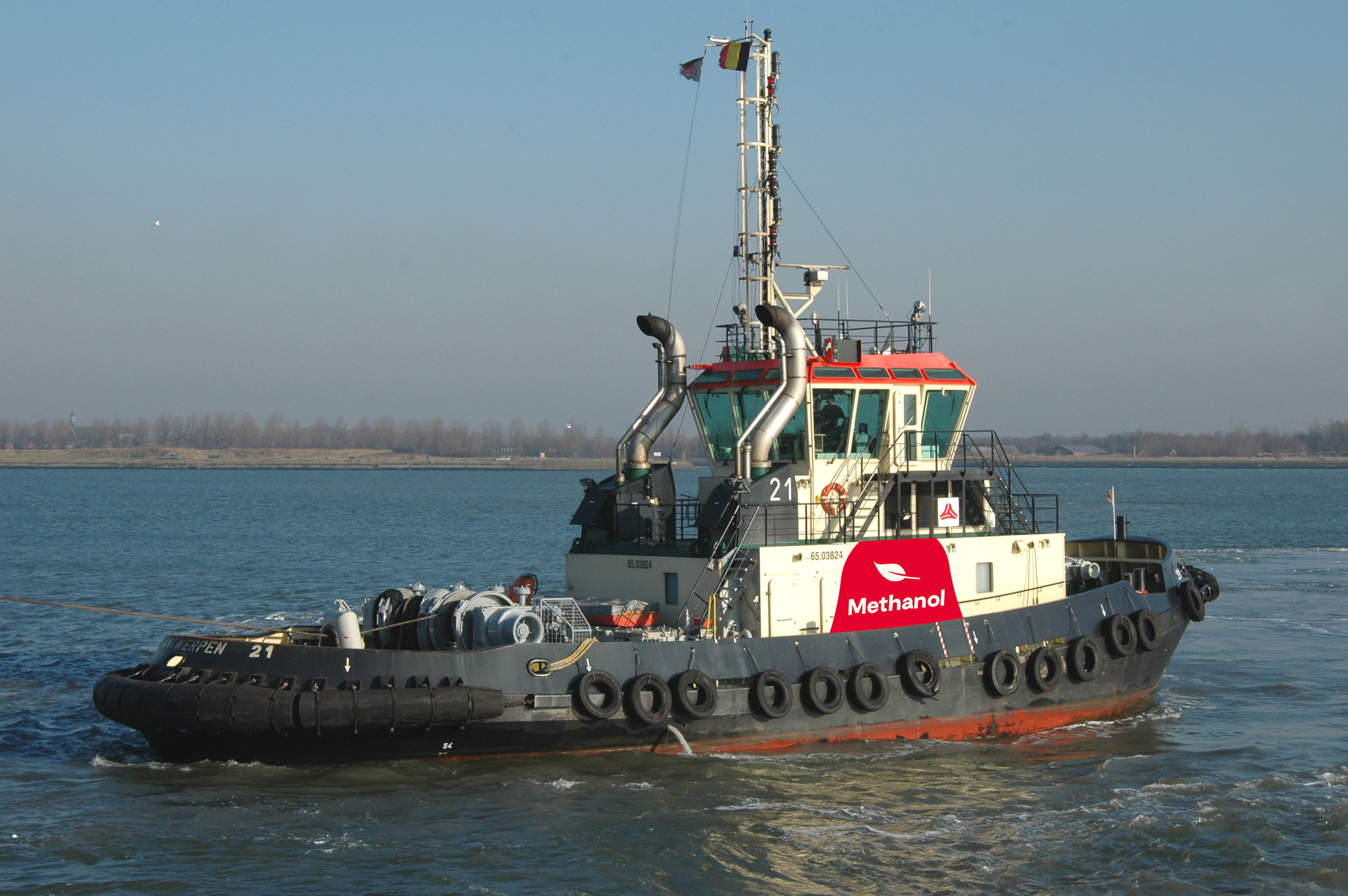A new world first for Port of Antwerp – a methanol-powered tugboat
European Commission gives green light for methatug
June23, 2021- Port of Antwerp is converting a tug to methanol propulsion – a world first. The ‘methatug’ is part of the European Union-funded Fastwater project, which aims to demonstrate the feasibility of methanol as a sustainable marine fuel. The European Commission approved the project this week, a decision that will help the Port of Antwerp take another important step in its transition to becoming a sustainable and CO2-neutral port.
Amendment of regulations
Rhine-based inland navigation craft must comply with the Central Commission for Navigation on the Rhine’s (CCNR) regulations, which had previously forbidden the use of methanol as a marine fuel. To receive the necessary dispensation, the methatug project was therefore submitted to the CESNI, the European committee that administers overall standards for inland navigation. The clearance process, which took 18 months of detailed negotiations, was finally agreed by European Commission earlier this year. The methatug is now expected be operational early 2022.
Fastwater consortium
The methatug is part of the Fastwater project, which was set up by a group of European maritime research and technology leaders, including Port of Antwerp. The consortium aims to demonstrate the feasibility of renewable methanol as a future-proof fuel for carbon-neutral shipping. The methatug development has been funded by the European research and innovation programme, Horizon 2020.
Besides Port of Antwerp, which is supplying the tugboat, several other partners are involved in this project. Swedish shipbuilder, Scandinaos, designed the vessel’s modifications, ABC (Anglo Belgian Corporation) is responsible for converting the engine and for installing the methanol tanks and pipes, while the German company, Heinzmann, is adapting the injectors. The Belgian engineering company, Multi, carried out the feasibility study for the project.
A multi-fuel port
This marine fuel first forms part of a comprehensive greening programme for Port of Antwerp's own fleet, in which the organisation will systematically strive to integrate the most environmentally friendly technologies available. The port of Antwerp, the fifth largest bunkering port in the world, has integrated LNG into its bunkering market in the past few years. By 2025, it aims to become a fully-fledged multi-fuel port, in which seagoing and inland vessels will be able to bunker, not only conventional fuels, but also low-carbon alternatives such as methanol, hydrogen or electricity.
Jacques Vandermeiren, CEO of Port of Antwerp: "Together with our partners, we are constantly looking for innovative applications and opportunities for the transition to alternative and renewable energy sources. This methatug is a further and also an important step in the transition towards a sustainable and CO2-neutral port that has enabled us to overcome a variety of technical and regulatory challenges. Thanks to projects such as this, we are paving the way and hope to be an example and a source of inspiration for other ports.”
Annick De Ridder, port alderwoman: “Just like with the hydrotug, the hydrogen tugboat, this project confirms our pioneering role in the field of energy transition. The ecosystem of the Antwerp port platform forms an ideal, large-scale testing ground for a project of this type."
CESNI Secretariat, Benjamin Boyer: “The CESNI Secretariat is very enthusiastic about this retrofitted tugboat and is looking forward to learning from this experience. Indeed, it would be a major contribution to the ongoing regulatory work to allow methanol as fuel and then contribute to the energy transition of inland navigation.”
